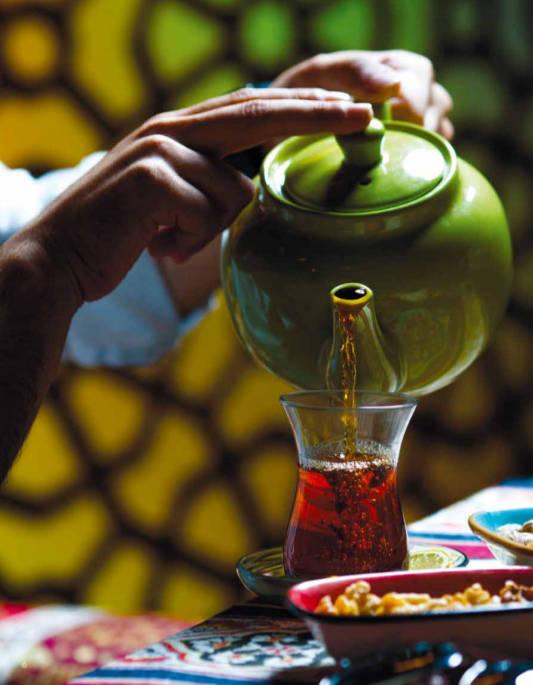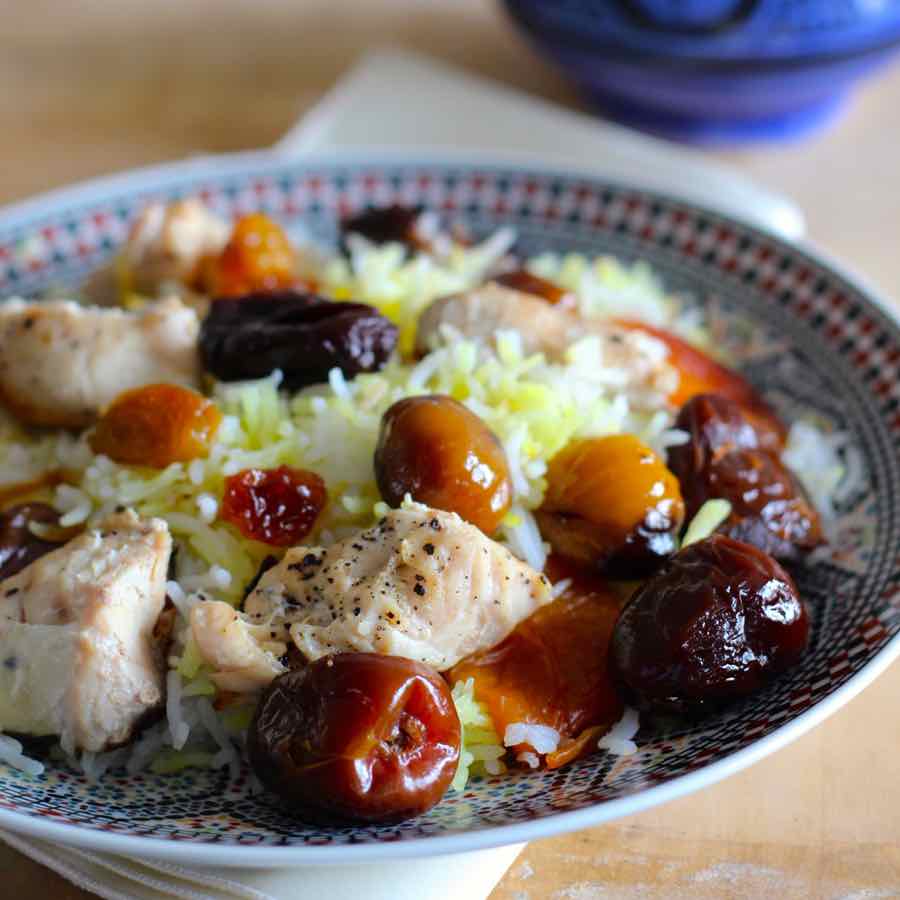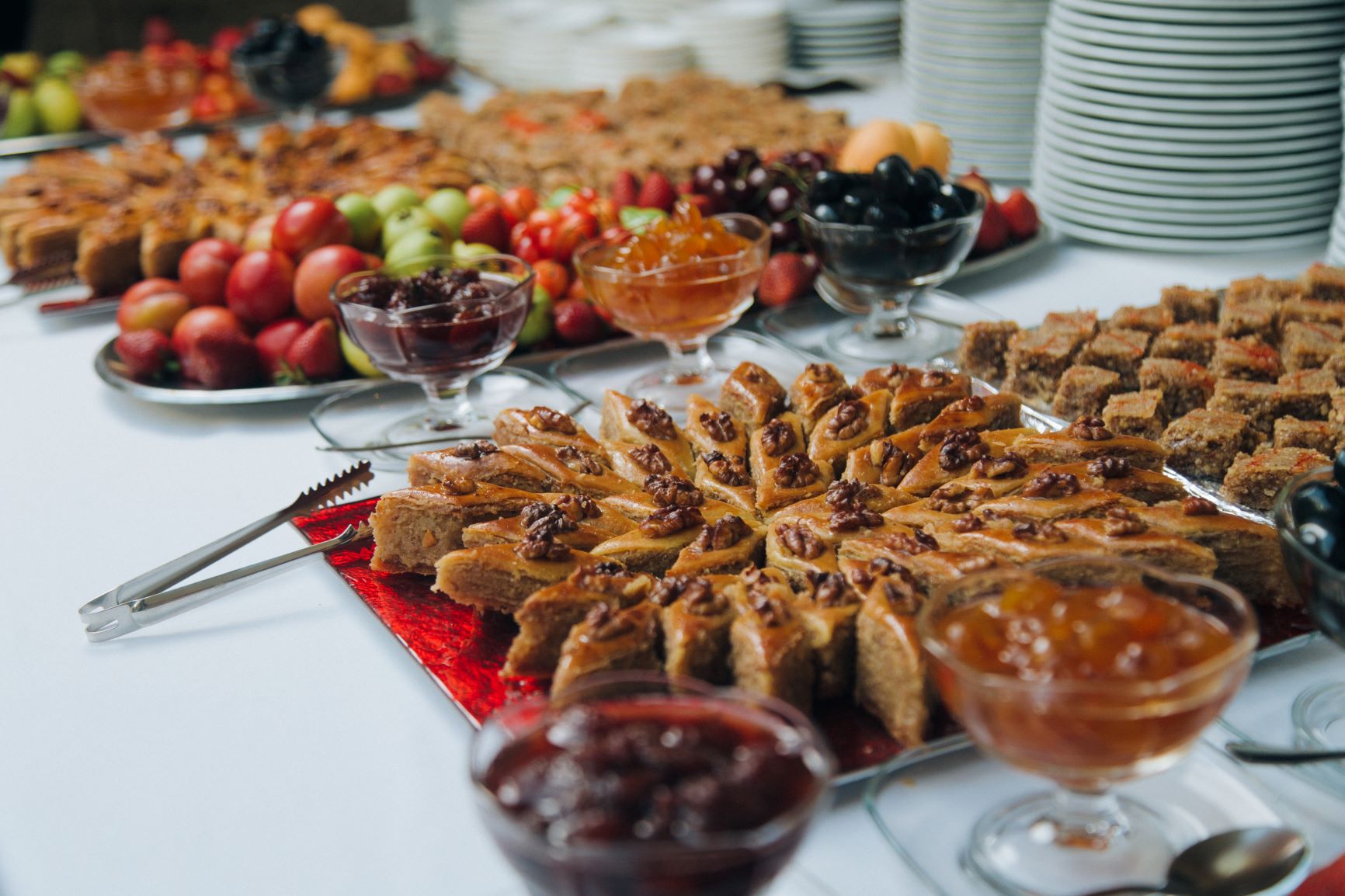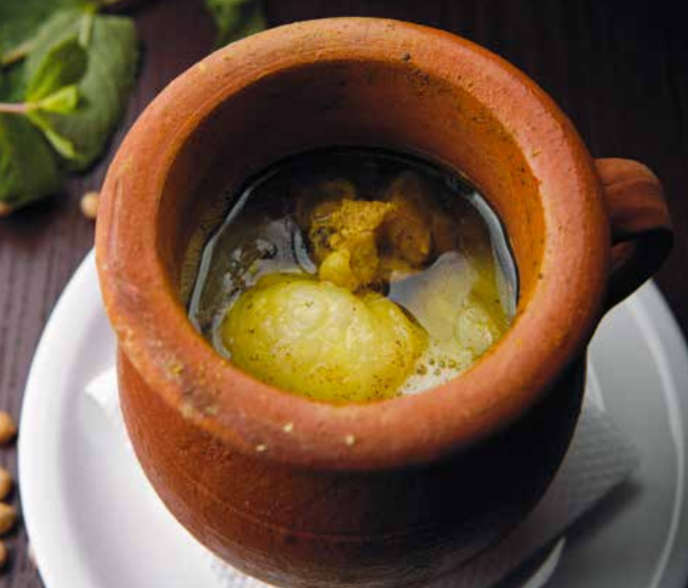Çay

Azərbaycanda çay istilik və qonaqpərvərliyin sinonimidir. Ənənəyə əsasən, heç vaxt bir qonağa, evinizi, çay təklif etmədən tərk etməsinə icazə verməyin. Çay mərasimləri əsrlər boyu öz ayin və mərasimlərini əhatə edən şəkildə inkişaf etmişdir. Çayımızı "armudu" adlanan armud şəklindəki xüsusi bir stəkanda, tez-tez limon, şəkər, bal, cem, qoz-fındıq və şirniyyatlarla birlikdə veririk. Ən məşhur olan qara çaydır.

Digər bloq yazıları

Plov
Otlar, quru meyvələr, ət yaxud da balıq və digər yerli məhsullarla qarışdırılmış düyüdən hazırlanan plov heç vaxt cansıxıcı ola bilməyən bir yeməkdir! Plovun müxtəlif növləri var və o hər hansı bir milli bayramda həmişə süfrədə olur. Ən populyar növlərdən bəziləri "fişincan" (nar və qoz sousundakı çəkilmiş ət ilə), "şirin" (kişmiş və qurudulmuş ərik ilə) və yağlı lavaş çörəyi qatlarına bürünmüş "şah"dır.

Paxlava
Dadına doyulmaz və ən ləzzətli xəmir xörəyimiz, məşhur paxlava: qoz-fındıq və ya püstə ilə doldurulmuş, bal və ya şərbət ilə örtülmüş xəmir təbəqələri. Ənənəvi olaraq Novruz tətilində "şəkərbura" və "şorqoğal" ilə birlikdə yeyilir, amma, eyni zamanda il boyu da ləzzətlə yeyilə bilər. Paxlava, alovu simvolizə edən bir almaz formasına malikdir və bölgədən bölgəyə fərqlənir. Şirniyyatları ilə məşhur olan iki şəhər - Şəki və Qubada paxlavanın regional dəyişikliklərini sınamağınızı tövsiyə edirik.

Piti
Şəkinin məşhur bu yeməyi, şəhərin işçi sinfi üçün, doyumlu olan quzu əti yeməyi kimi hazırlanmağa başlamışdır. İndi ölkə daxilində də məşhurdur, amma, buna baxmayaraq, ən orijinal piti qabı üçün mütləq Şəkiyə getməlisiniz. Noxud, şabalıd, zəfəran və yerli ədviyyatlar, yeməyə ləzzətlər qatır, lakin əsas element pitinin bişirildiyi və verildiyi saxsı qablarda olur. Üstəlik, bu, əslində bir qabda iki yeməkdir: əvvəlcə bulyonu ayrı bir qaba töküb şorba kimi həzz alırsınız, sonra qalan hissəni əsas yemək kimi yeyirsiniz!

Şah plov
Daha çox toylarda və ya xüsusi günlərdə verilən şah plovu ‘plovların kralı’ adlandırırlar və ən çox qovurma - bişmiş ət, qoz-fındıq, quru meyvə və otlar ilə verirlər. Şah plov həm ləzzətli bir yeməkdir, həm də unudulmaz bir daddır. Yağlı lavaş çörəyi örtüyü ilə bir-birinə yapışdırılan plovu kəsdikdən sonra, düyü və digər məhsulların heyrətləndirici ətri sizə qalıcı bir təəssürat bəxş edəcəkdir.
